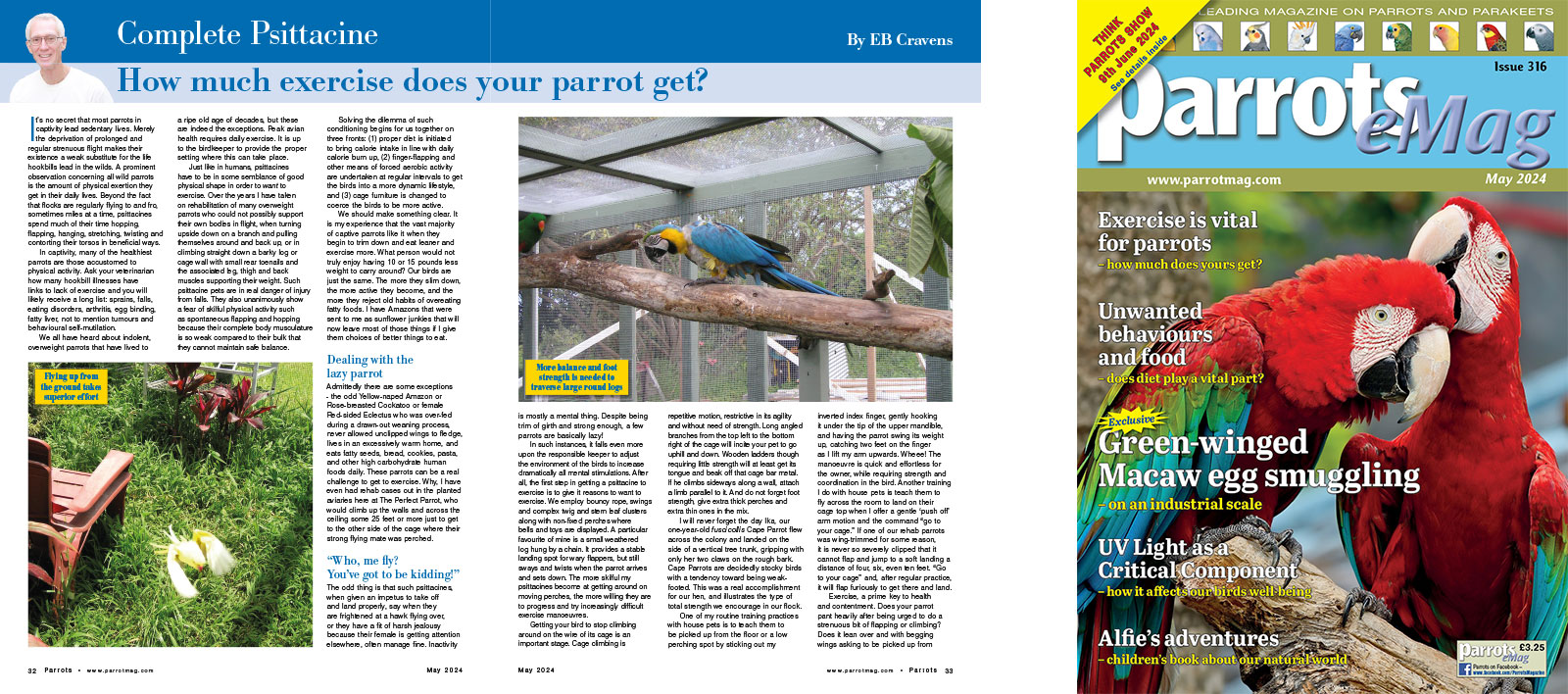
Complete Psittacine by Eb Cravens
It’s no secret that most parrots in captivity lead sedentary lives. Merely the deprivation of prolonged and regular strenuous flight makes their existence a weak substitute for the life hookbills lead in the wilds. A prominent observation concerning all wild parrots is the amount of physical exertion they get in their daily lives. Beyond the fact that flocks are regularly flying to and fro, sometimes miles at a time, psittacines spend much of their time hopping, flapping, hanging, stretching, twisting and contorting their torsos in beneficial ways.
In captivity, many of the healthiest parrots are those accustomed to physical activity. Ask your veterinarian how many hookbill illnesses have links to lack of exercise and you will likely receive a long list: sprains, falls, eating disorders, arthritis, egg binding, fatty liver, not to mention tumours and behavioural self-mutilation.
We all have heard about indolent, overweight parrots that have lived to a ripe old age of decades, but these are indeed the exceptions. Peak avian health requires daily exercise. It is up to the birdkeeper to provide the proper setting where this can take place.

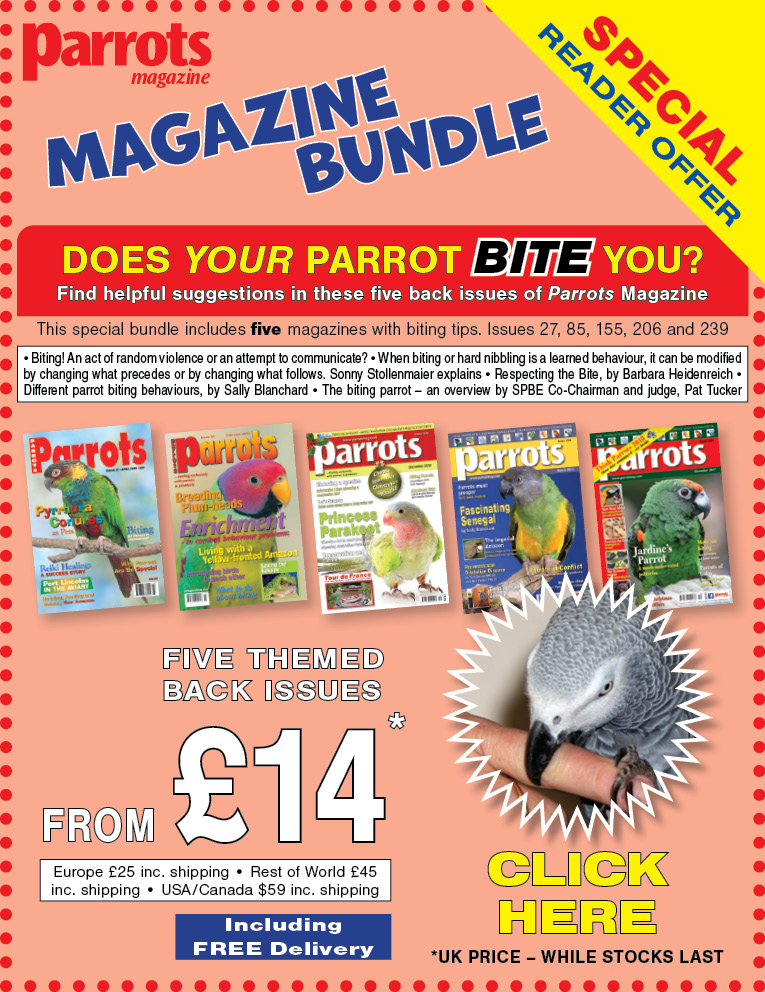

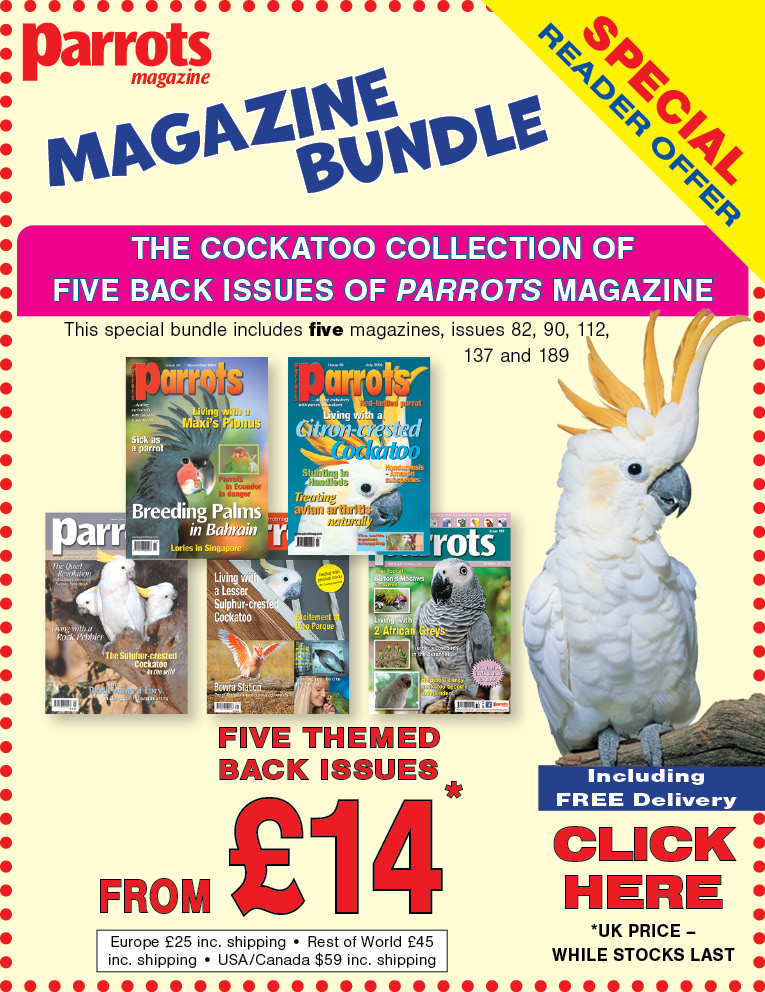
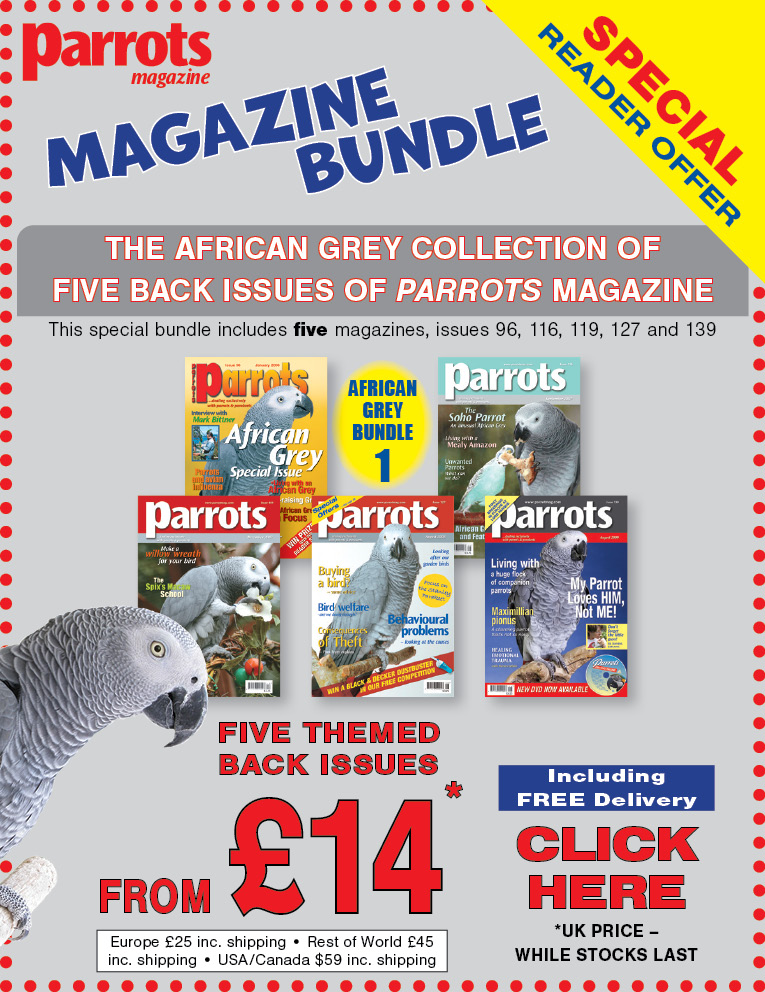

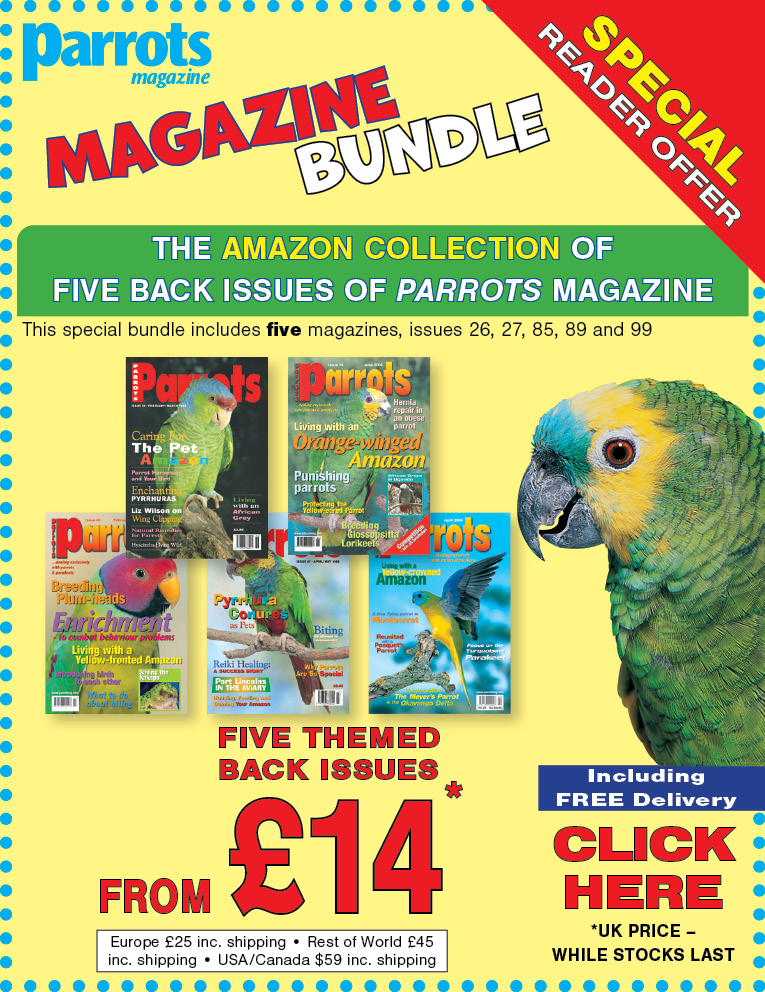

Parrot Chat
Buyers Guides
Breeding articles